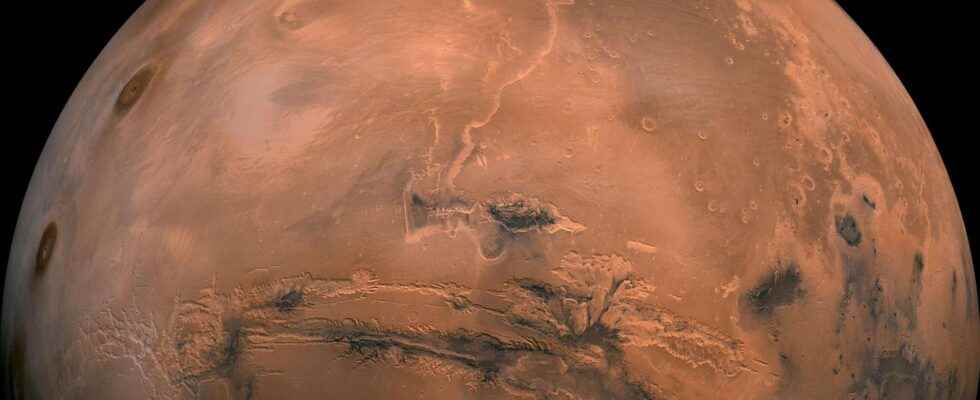On a large scale, the internal structure of Mars appears quite similar to that of Earth. But what about in detail? The InSight mission to Mars provides us with details on the nature of the Martian crust and shows us how different it is from the Earth’s crust.
You will also be interested
Like the Earth, Mars has different geological envelopes: a core, a coat and a crust. While we owe our knowledge of the internal structure of the Earth to the study of seismic waves generated by the great earthquakesthe internal structure of Mars is still poorly known, simply because we do not have this type of data for the Red Planet.
Many questions thus remain unanswered: how big is the Martian core? What is it made of? Is it fully solid or does it have an external part liquid, like the Earth? What is the composition of the mantle and is it animated by movements of convection ?
Probing the Martian crust with earthquakes
Regarding the crust, the new results provided by the martian mission InSight allow us to better define it. The purpose of this mission is to study the internal structure of Mars through seismic measurements and flux measurements. heat. The module is in fact equipped with a seismometer which records the seismic activity of the planet. Measurements made by InSight showed that the Martian earthquakes were of relatively low intensity, although they were more frequent than scientists had assumed. The mechanisms generating these earthquakes are still poorly understood. They could in particular be generated by landslides cliffs or landslides on the surface of Mars. Anyway, the analysis of seismic waves made it possible to refine our knowledge of the Martian crust and to compare it with the characteristics of the Earth’s crust.
Continental and oceanic crusts: major differences
We must first remember that the earth’s crust is defined in two subsets:
- the continental crust30 kilometers thick on average (up to 70 kilometers under mountains and cratonic regions), of predominantly felsic composition (granitic);
- the oceanic crustmuch finer (about 7 kilometres), of mafic composition (gabbros and basalts).
These two types of crust therefore have a very different composition and origin. While oceanic crust is continuously being created at mid-ocean ridges by partial fusion of the’asthenospherecontinental crust was formed very early in the history of the Earth. Continental growth is almost nil at present. The mechanisms of formation of the first continental crust are still debated.
Characteristics of the Martian crust
Data reported by InSight shows that the Martian crust would be between 20 and 72 kilometers thick, which is quite similar to the Earth’s continental crust. However, its composition mainly basalt is closer to that of the oceanic crust. It is therefore difficult to classify the Martian crust like the Earth’s crust. At the chemical level, it is mainly composed of oxygen, siliconof magnesiumofaluminumbut also of ironwhich gives it this Red color characteristic. The crust of Mars thus contains twice as much iron as the Earth’s crust. Despite the predominance of basalts, some observations show the presence of minerals typical of felsic, continental-type rocks, such as feldspars. This could indicate the formation of a continental crust on early Mars. Further research is needed, however, to determine how such rocks could have formed on the planet’s surface.
Some similarities but many differences
Some similarities can be found in the architecture of the crust. Like the continental crust of the Earth, the Martian crust would thus be divided into two or three levels. But the mineralogical and rheological characteristics of these different levels are still unknown. It is only known that the superficial part of the Martian crust consists of materials pulverized by the meteorite impacts that have struck the planet for several billion years. It’s about regolith. Below, there would be an altered layer of about ten kilometers, then a deep crust.
Another fundamental difference between the two planets is that the Martian crust appears completely immobile, whereas one of the peculiarities of the Earth’s crust is to be animated by a perpetual movement, in connection with the tectonic plates. The Martian crust does not appear to be, or to have been, divided into different plates, although one major difference can be observed between the two hemispheres: the crust of thesouthern hemisphere is much thicker than the crust of thenorthern hemisphere. We are talking about a Martian dichotomy. This observation suggests different formation processes, which are however still very poorly understood.
If some similarities exist between the Earth and Martian crusts, recent observations made on Mars show rather different formation mechanisms.
Interested in what you just read?
